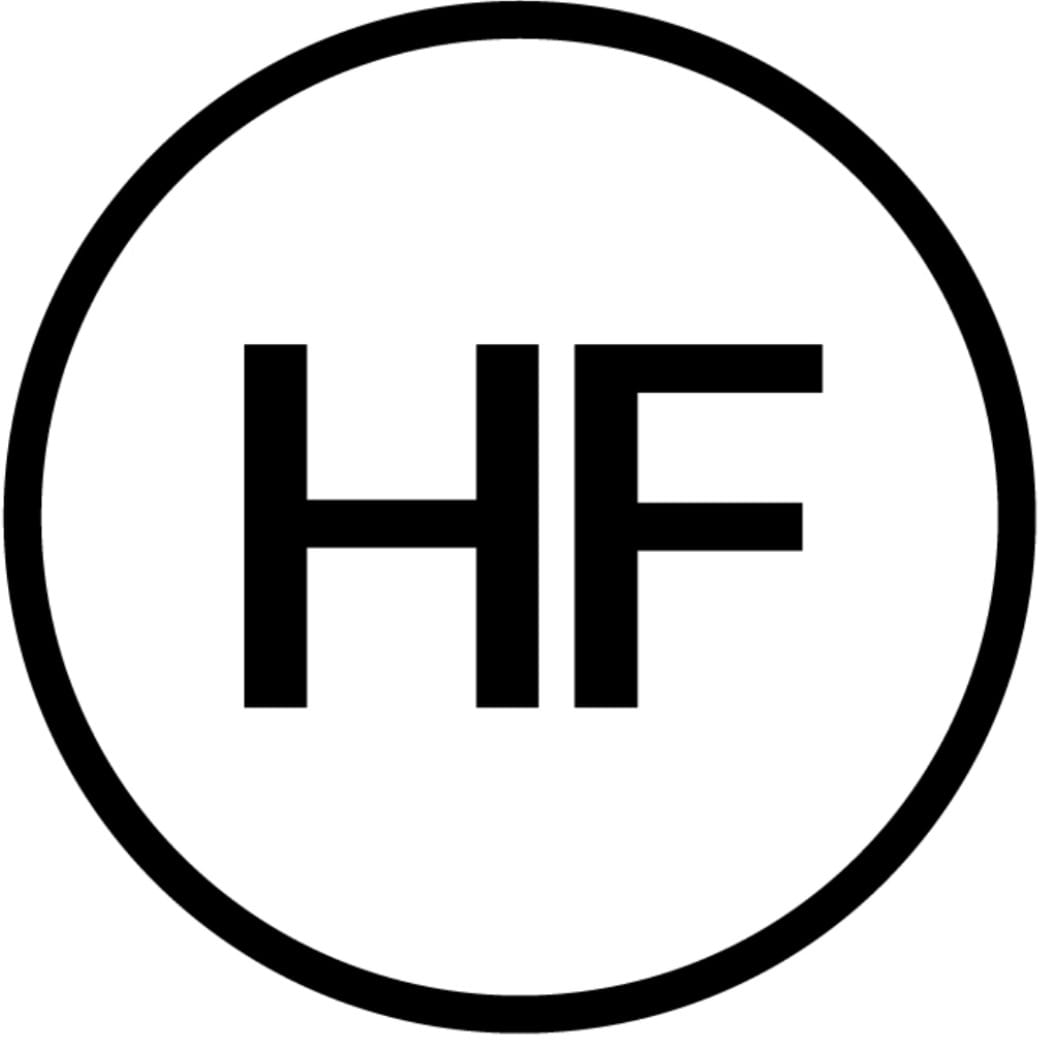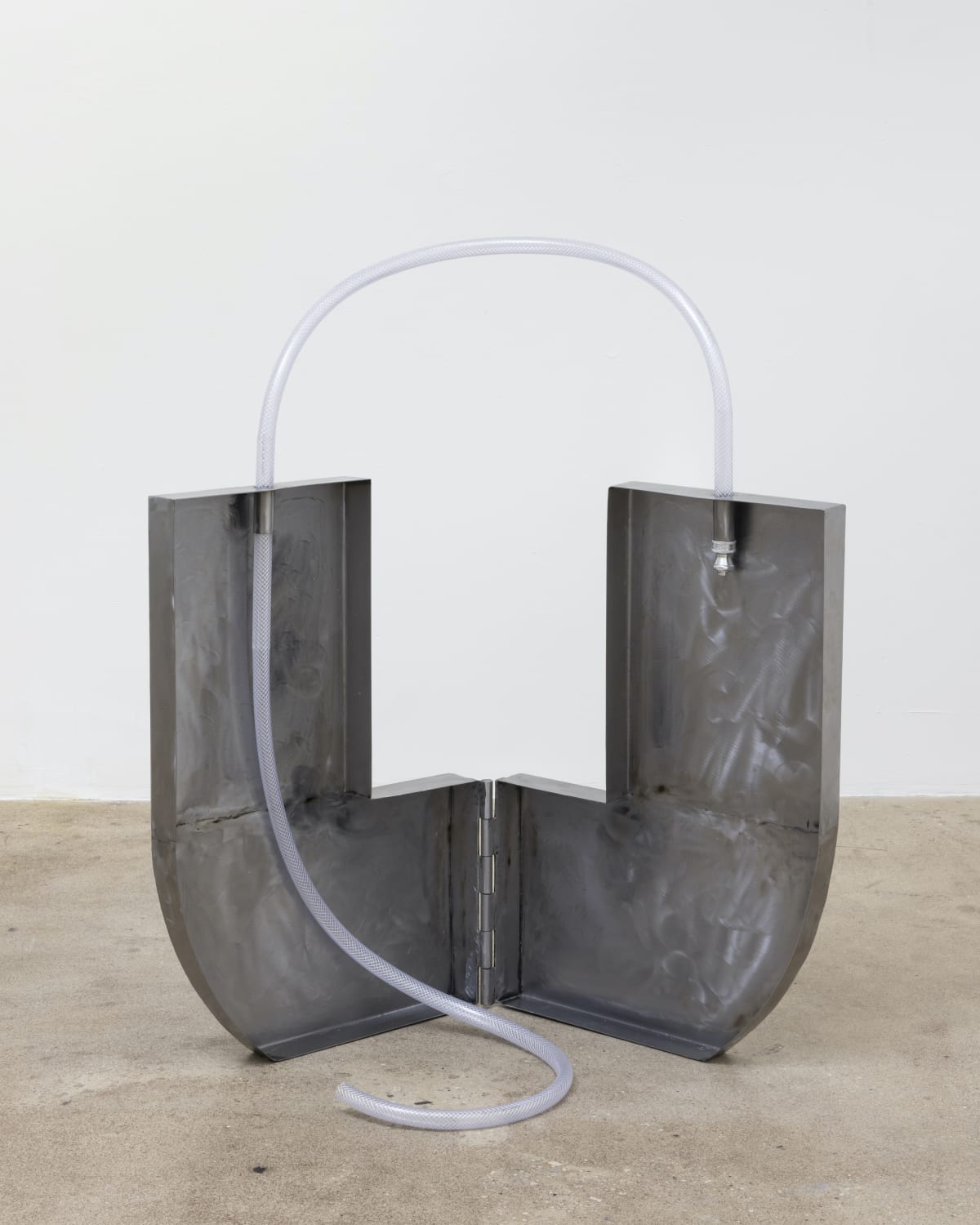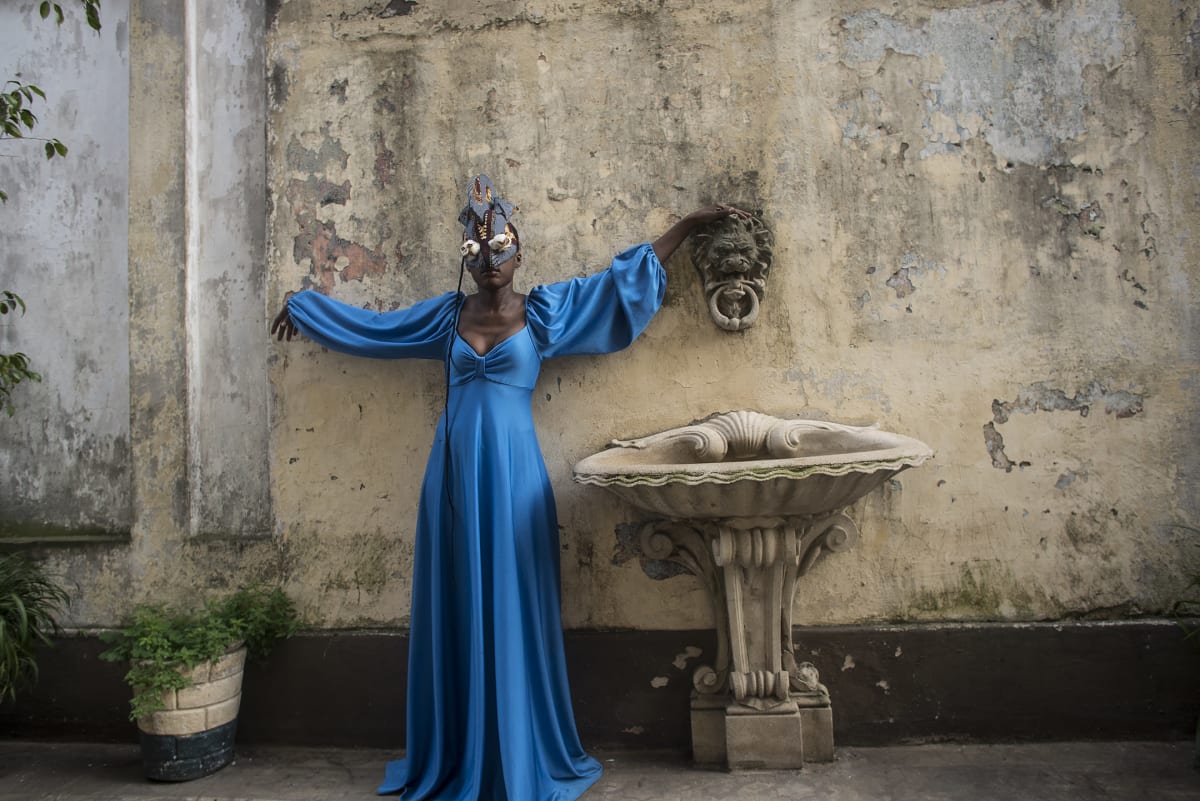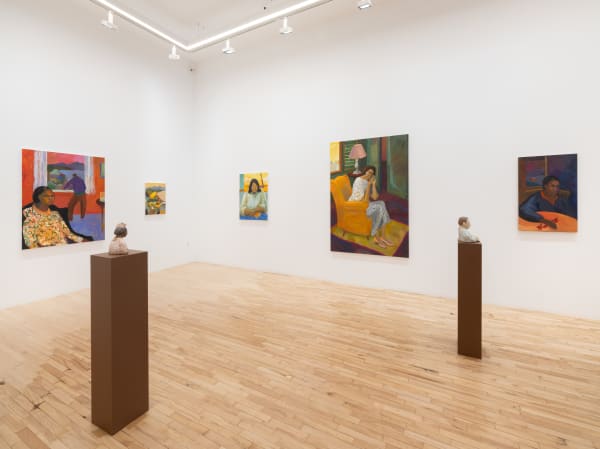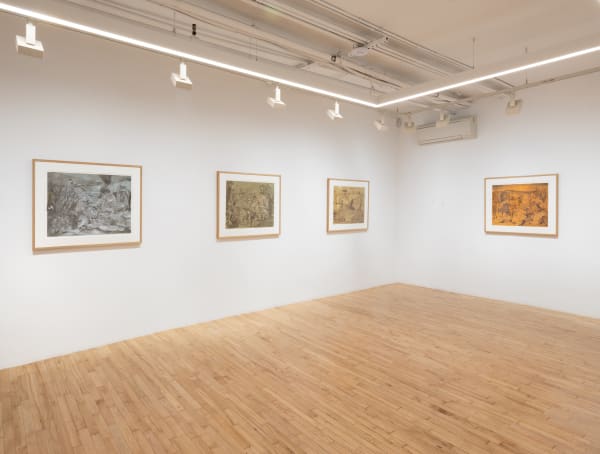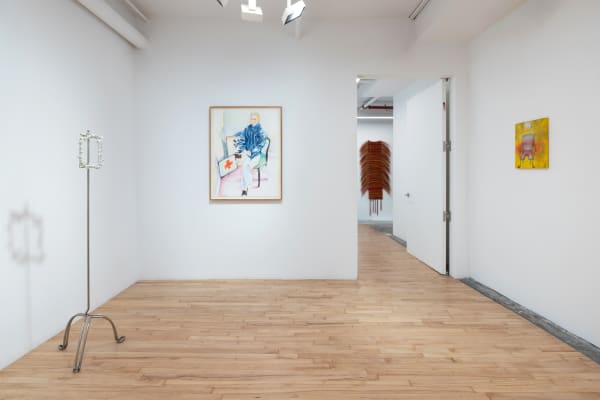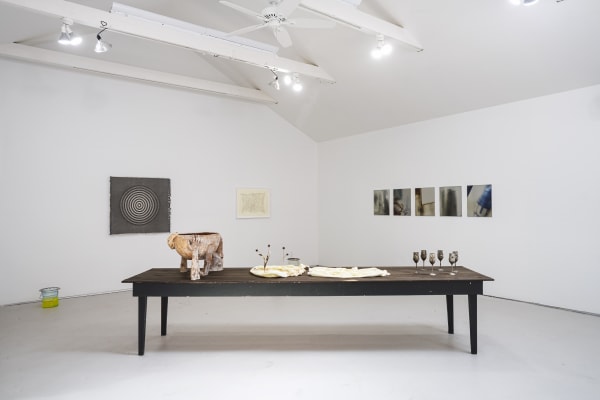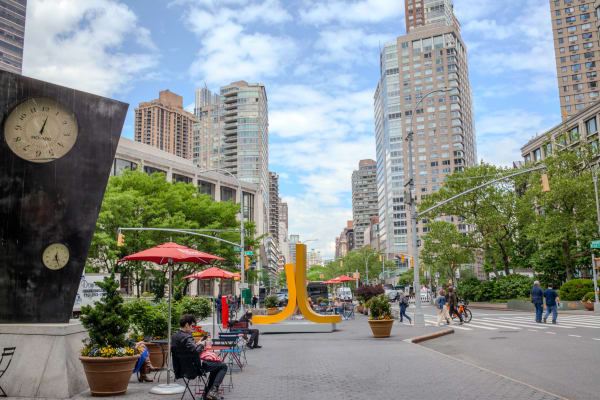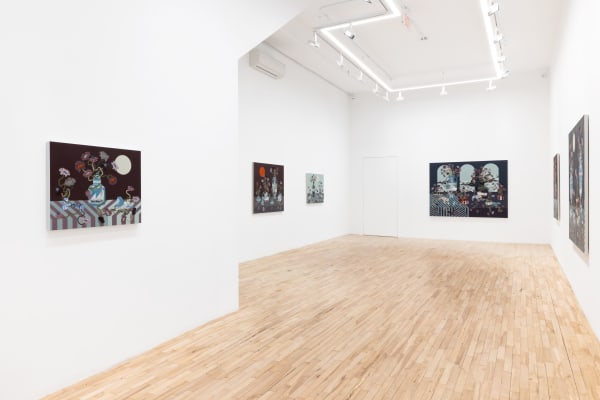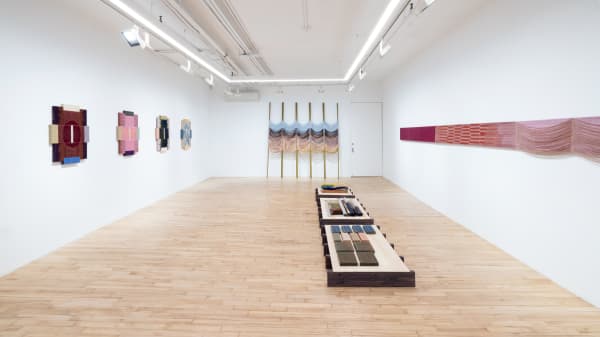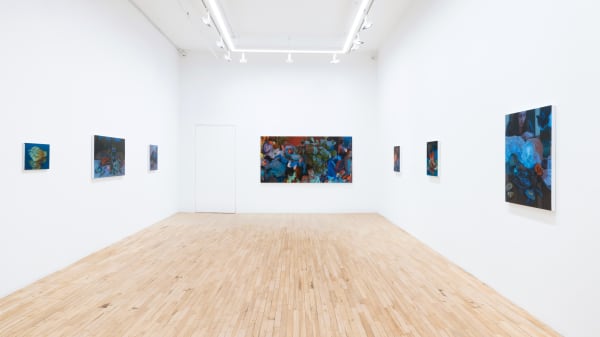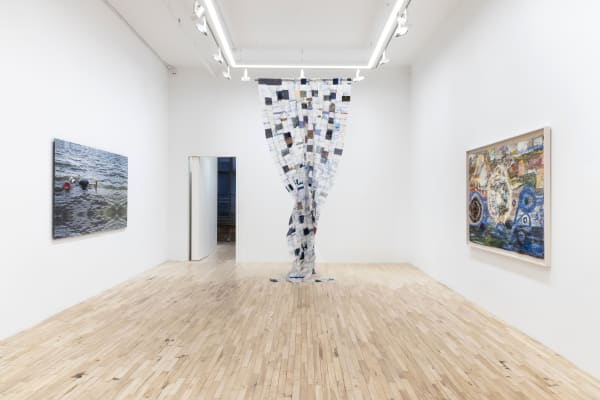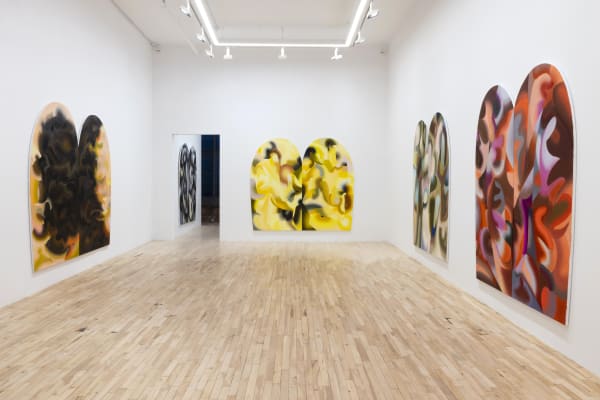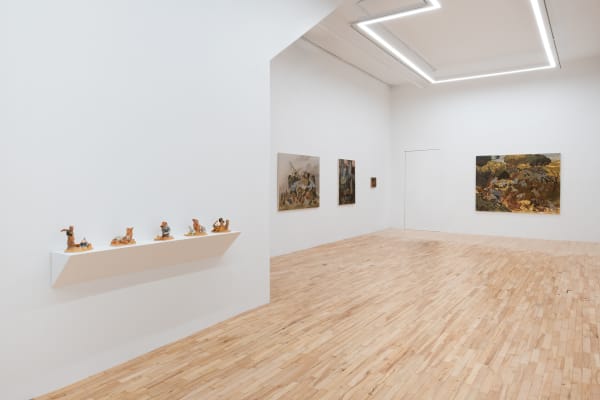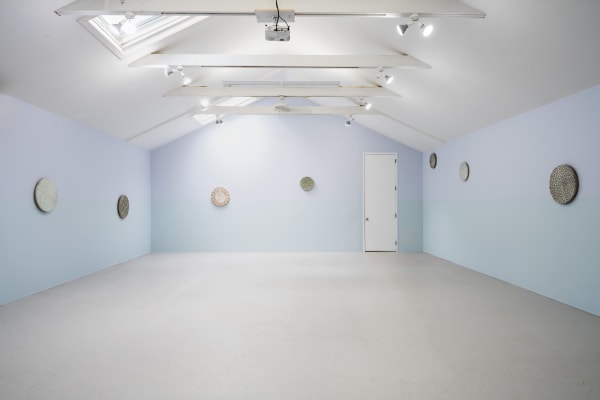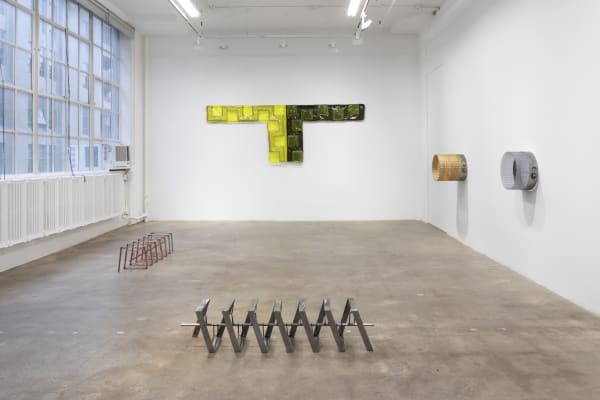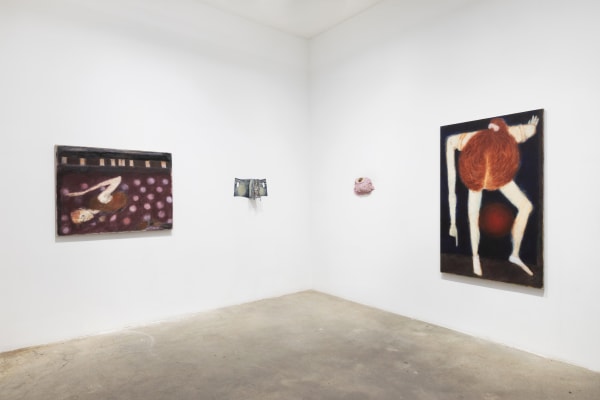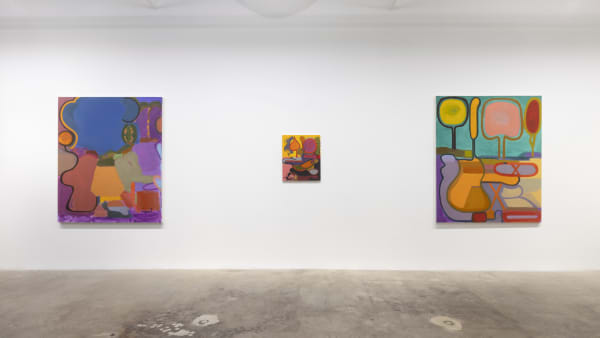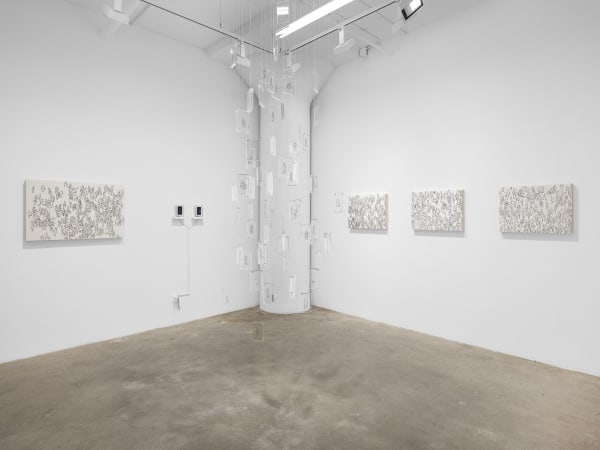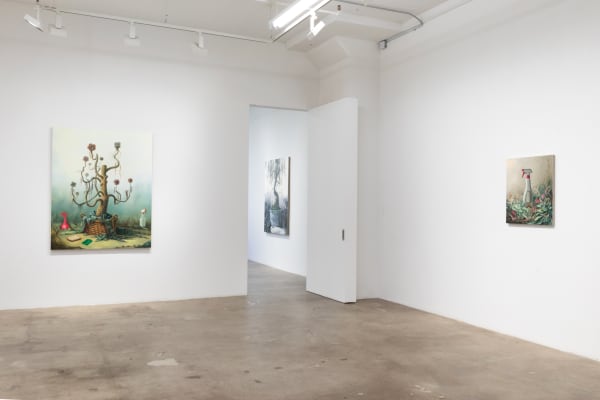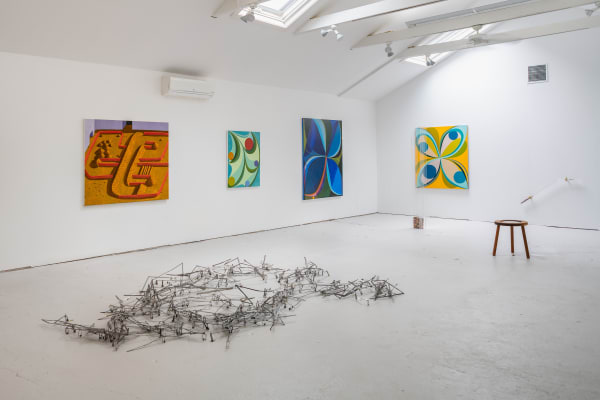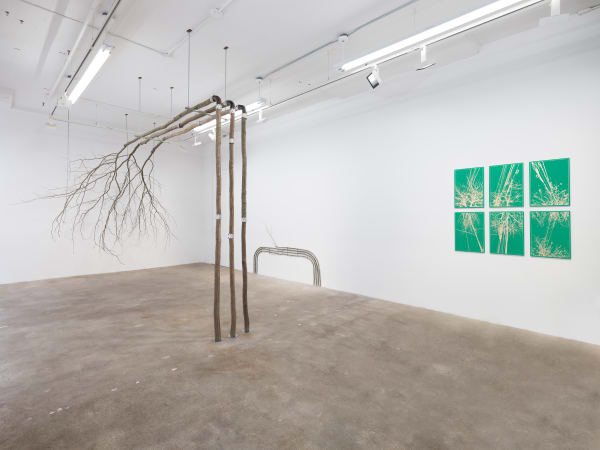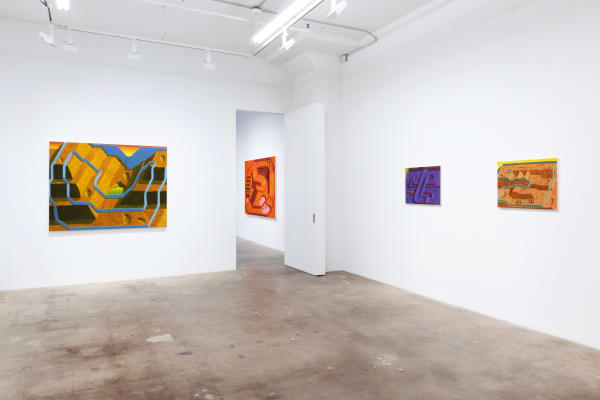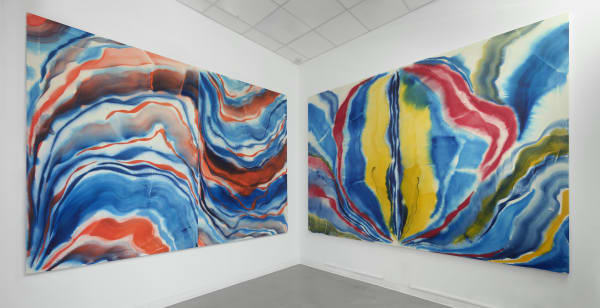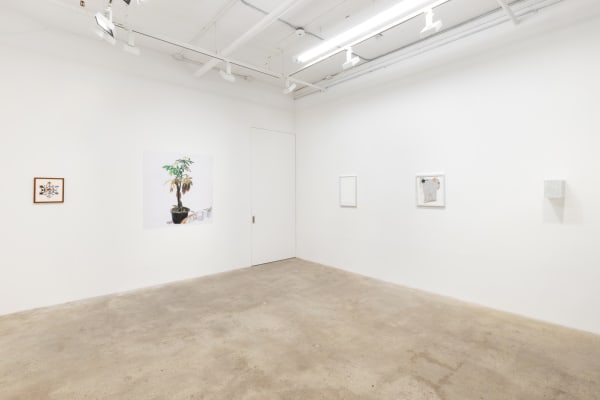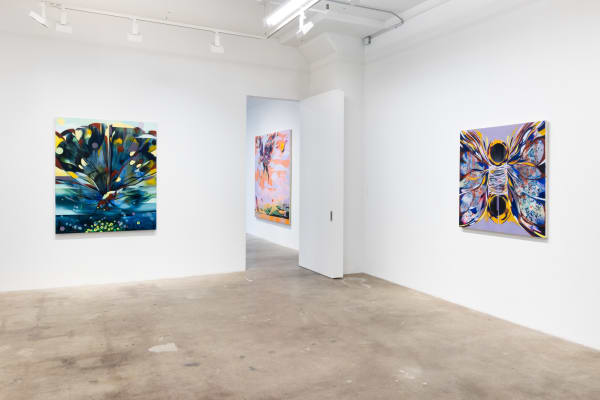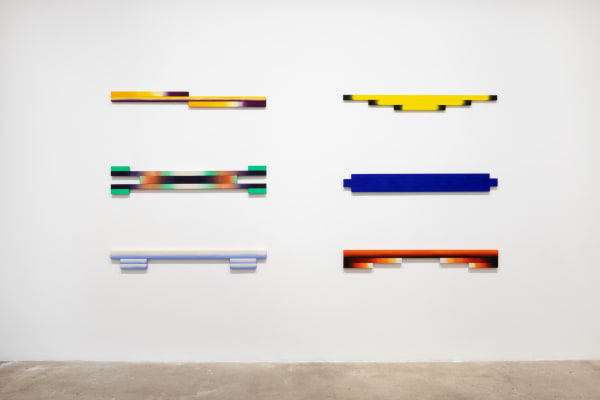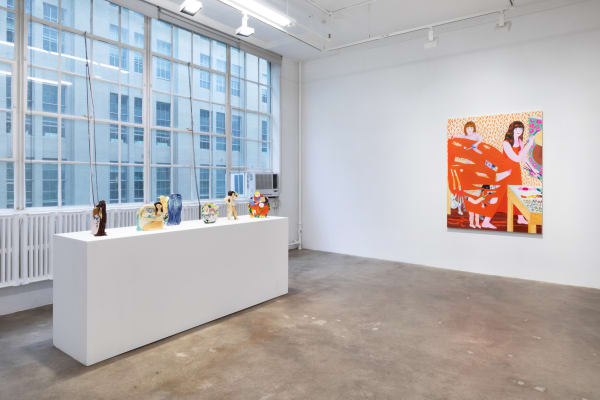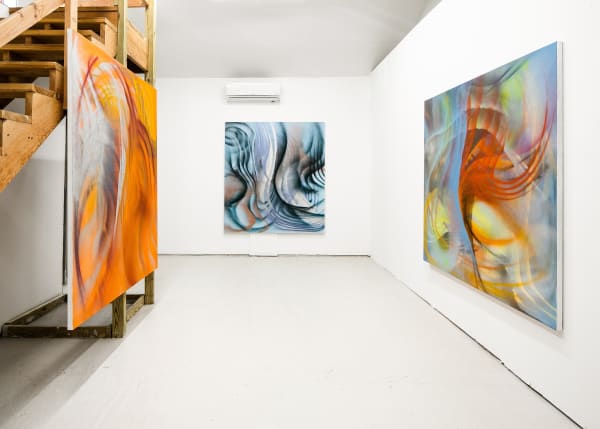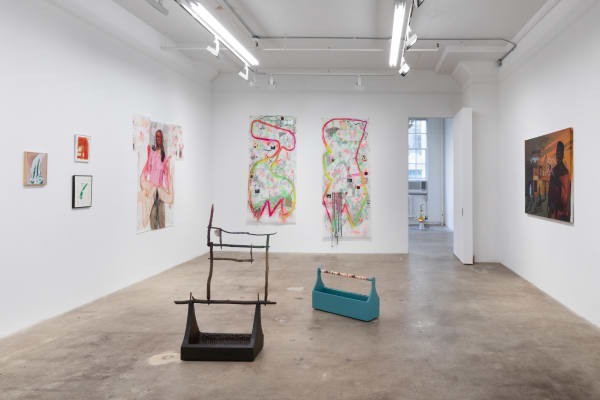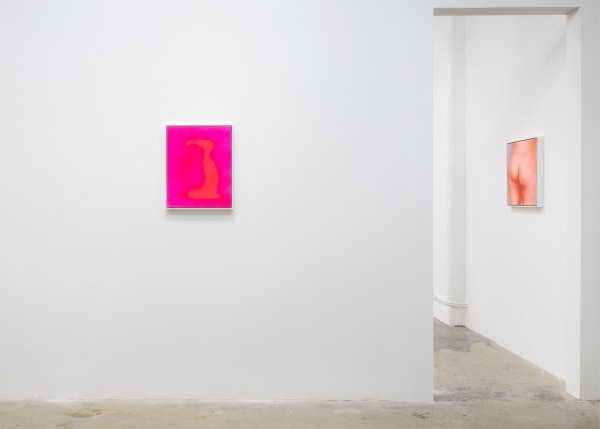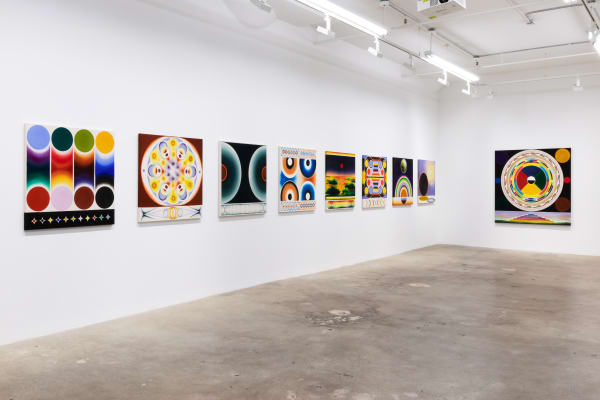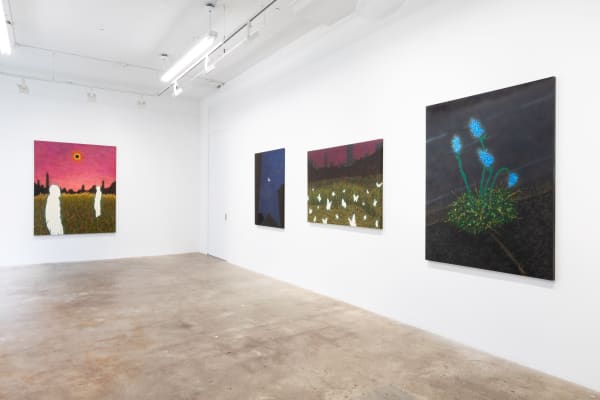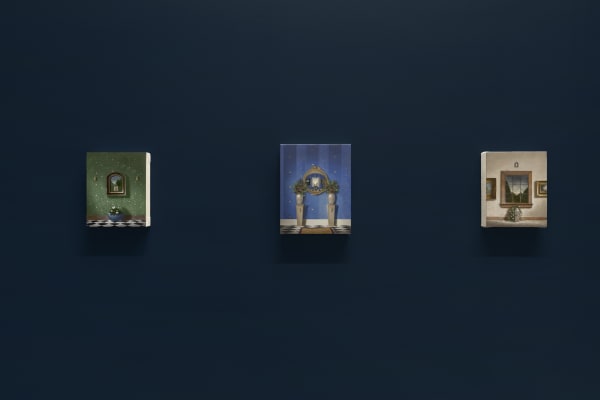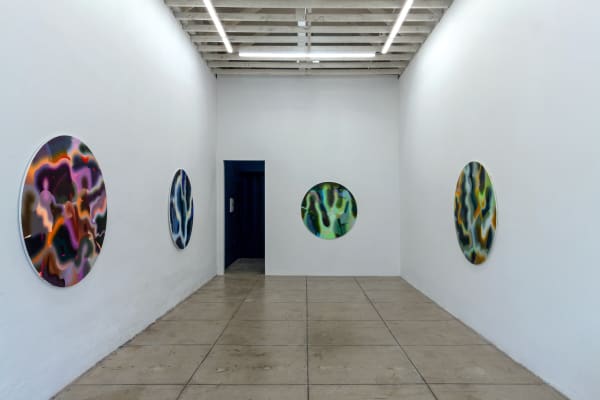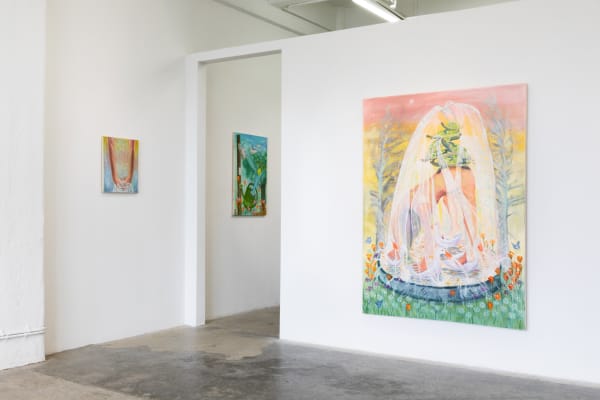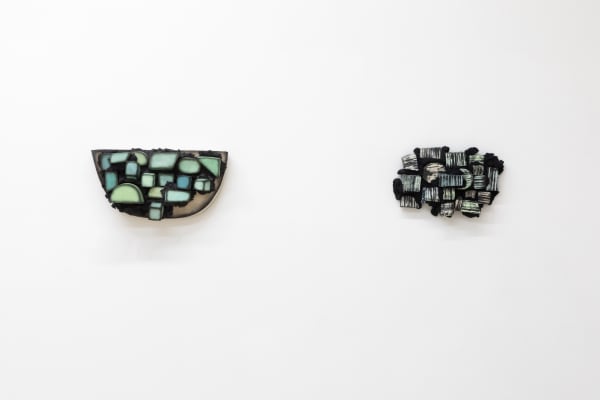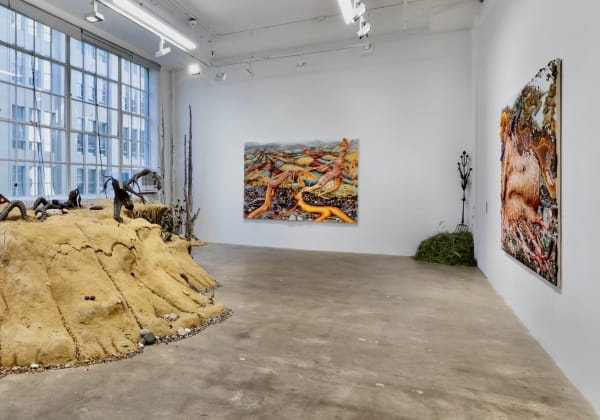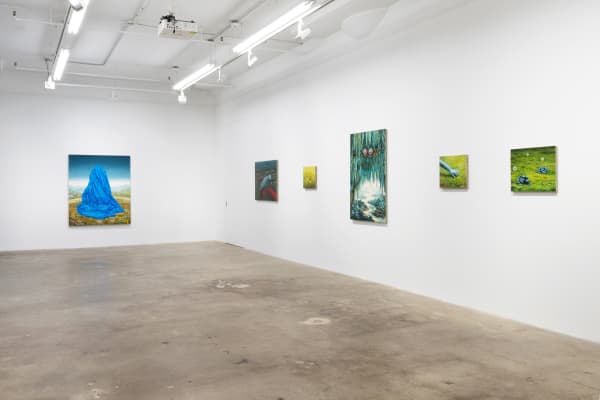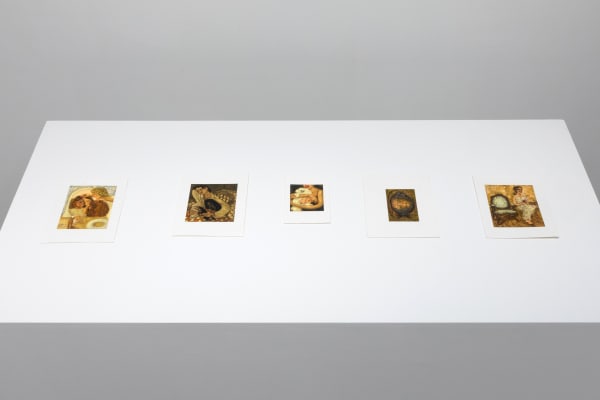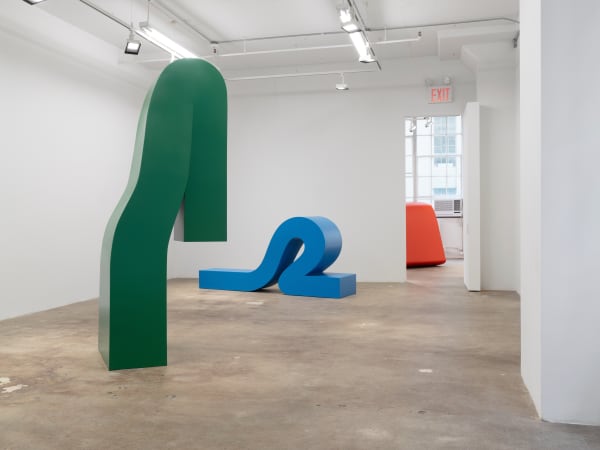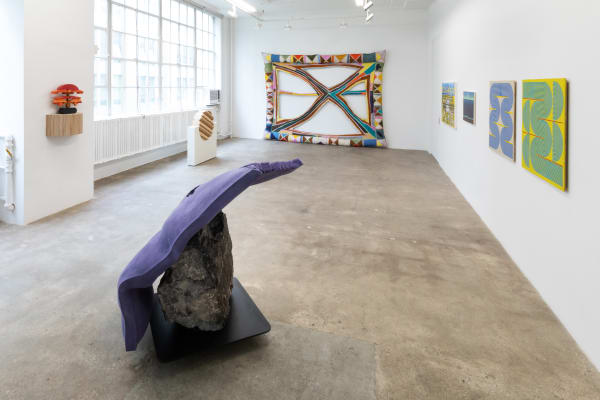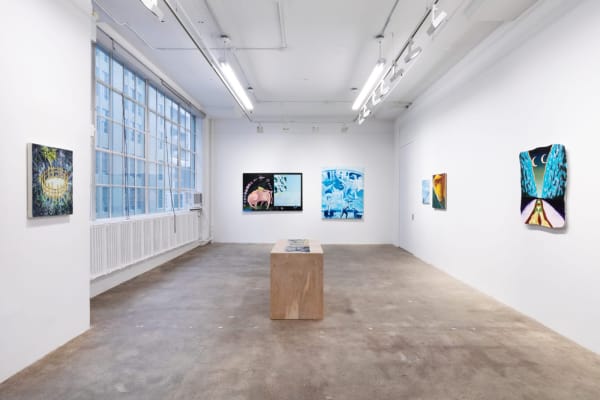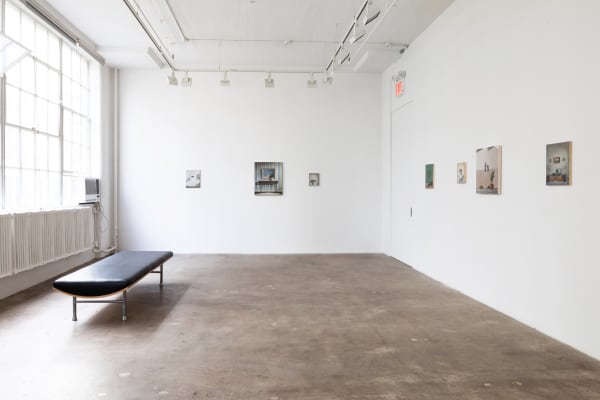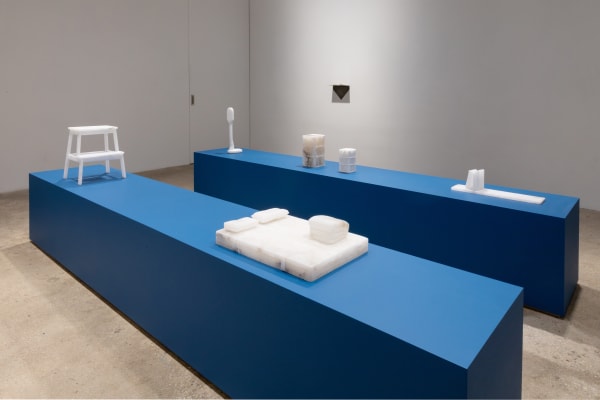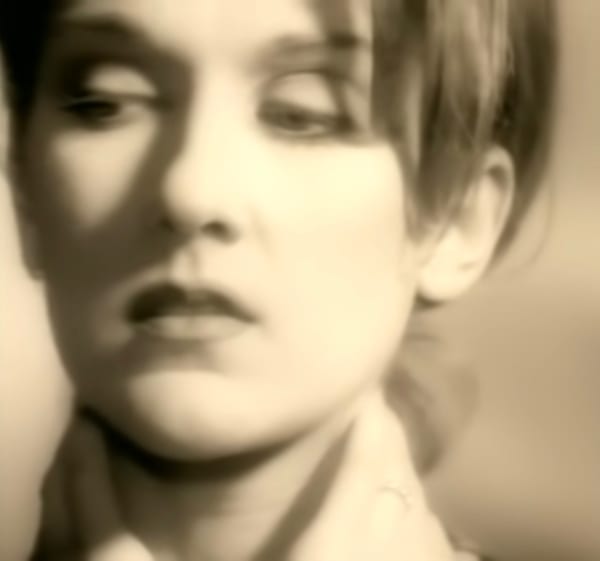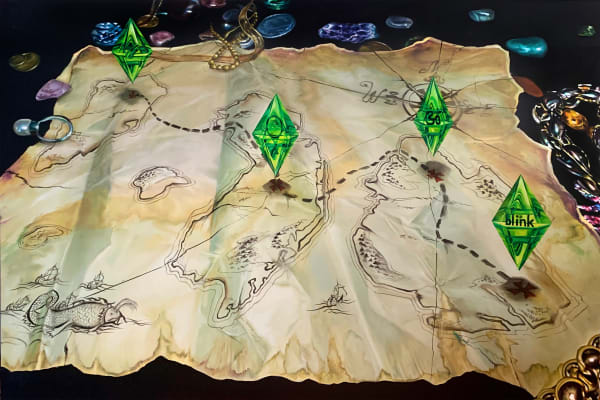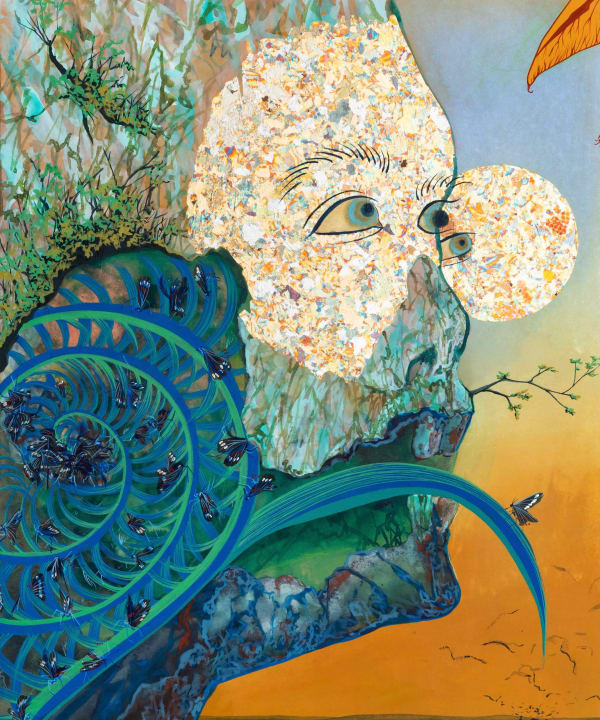ON VIEW
-

Adama Delphine Fawundu in "Not All Travellers Walk Roads – Of Humanity as Practice"
The 36th Bienal de São Paulo 2025年9月6日 - 2026年1月11日 INSTITUTIONAL Entitled Not All Travellers Walk Roads – Of Humanity as Practice , the edition will be led by chief curator Prof. Dr. Bonaventure Soh Bejeng Ndikung together with his conceptual team of co-curat... 继续 -

Salt 17: Adama Delphine Fawundu
Utah Museum of Fine Arts 2025年9月13日 - 2026年6月14日 INSTITUTIONAL Adama Delphine Fawundu is a New York-based artist of Mende, Krim, Bamileke, and Bubi descent. Her practice embodies ancestral memory across space and time, reconnecting places, objects, plants, animal... 继续 -

Alina Tenser: The Wreath: A Century of Ukrainian Women Beyond the Ocean
The Ukrainian Museum, New York 2025年9月13日 - 2026年1月18日 INSTITUTIONAL Looking back on the evolution of the Ukrainian feminist tradition, this exhibition honors the 100th anniversary of the Ukrainian National Women’s League of America (UNWLA) and the contributions ... 继续 -

Praise House: Adama Delphine Fawundu
Harvey B. Gantt Center for African-American Art + Culture 2025年10月3日 - 2026年3月8日 INSTITUTIONAL With Praise House , Adama Delphine Fawundu weaves a constellation of connections between herself and her global kin, mapping both physical and metaphysical movements across Africa and its diaspora. Fa... 继续
PAST
-

TABLETOP
Holiday Group Exhibition 2025年12月16日 - 12月20日 TRIBECA HESSE FLATOW is pleased to present TABLETOP , a holiday group exhibition featuring works by Annie Duncan, Carl D'Alvia, Emily Harter, Hana Ward, Katherine Vetne, Madeline Donahue, Paloma Izquierdo, an... 继续 -

Aglaé Bassens
VACANT 2025年11月14日 - 12月20日 TRIBECA HESSE FLATOW is pleased to present VACANT , a solo exhibition of new paintings by New York-based artist Aglaé Bassens. Marking her fourth solo exhibition with the gallery, VACANT continues Bass... 继续 -

Hana Ward
Much more elusive and even more wonderful 2025年10月10日 - 11月8日 TRIBECA HESSE FLATOW is pleased to present Much more elusive and even more wonderful , an exhibition of paintings and ceramics by Los Angeles-based artist Hana Ward, marking her first solo presentation with t... 继续 -

Emily Harter
Split the Rolling Year 2025年10月10日 - 11月8日 TRIBECA HESSE FLATOW is pleased to present Split the Rolling Year , a solo exhibition of new works by Bay Area artist Emily Harter. The show will be on view from October 10th through November 8th 2025, and ma... 继续 -

Emma Safir
Uyt Den Gheest 2025年9月5日 - 10月4日 TRIBECA HESSE FLATOW is pleased to present Uyt Den Gheest , an exhibition by New York-based artist Emma Safir, marking her first solo presentation since joining the gallery. Featuring a group of new works inc... 继续 -

As beautiful as the chance encounter with a sewing machine
Curated by Cecilia Salama 2025年9月5日 - 10月4日 TRIBECA HESSE FLATOW is proud to present As beautiful as the chance encounter with a sewing machine , a group exhibition curated by Cecilia Salama featuring the work of eleven artists: Vamba Bility, Antonia B... 继续 -

Andina Marie Osorio
i still look for her in every lifetime 2025年6月19日 - 7月25日 TRIBECA Opens June 19, 6-8PM, 77 Franklin Street, Tribeca, NYC HESSE FLATOW presents i still look for her in every lifetime , the debut solo exhibition of New York-based artist Andina Marie Osorio. This exhib... 继续 -

Veronica, Veronica
Curated by Andrew Gardner and Emma Safir 2025年6月14日 - 7月26日 AMAGANSETT HESSE FLATOW is pleased to present Veronica, Veronica , a group exhibition of 33 international artists at its gallery space inside a 4,000 square foot former potato barn in Amagansett. The show, organ... 继续 -

Carl D'Alvia
Broadway Hubbub 2025年5月9日 - 11月17日 INSTITUTIONAL Carl D’Alvia: Broadway Hubbub The Broadway Mall Association May 9 – November 17, 2025 HESSE FLATOW, in partnership with The Broadway Mall Association and NYC Parks’ Art in the Parks ... 继续 -

Sarah Blaustein
Analytic Third 2025年5月2日 - 6月7日 TRIBECA HESSE FLATOW presents Analytic Third , a solo exhibition of new paintings by San Francisco Bay Area artist Sarah Blaustein. In her second presentation with the gallery, Blaustein explores the transcen... 继续 -

Jonathan Ryan
Among Stars and Stone 2025年5月2日 - 6月7日 TRIBECA HESSE FLATOW presents Among Stars and Stone , an exhibition of new works by Los Angeles-based artist Jonathan Ryan. For his second solo exhibition with the gallery, Ryan will present a dynamic body of... 继续 -

Lizzie Gill
Paraphernalia 2025年3月21日 - 4月26日 TRIBECA HESSE FLATOW is pleased to announce the opening of Paraphernalia , an exhibition of paintings by Lizzie Gill, marking her first solo presentation with the gallery. Known for her elegant tablescapes fe... 继续 -

Carolina Jiménez
All That We Carry 2025年3月21日 - 4月26日 TRIBECA HESSE FLATOW is pleased to announce the opening of All That We Carry , an exhibition by New York-based textile artist Carolina Jiménez. Marking Jiménez’s debut solo presentation, t... 继续 -

Xiao Wang
Seeing Through 2025年2月14日 - 3月15日 TRIBECA HESSE FLATOW is pleased to announce the opening of Seeing Through , an exhibition of paintings by New York based artist Xiao Wang, marking his first solo presentation with the gallery. Wang’s hy... 继续 -

Alyssa Klauer
The Dreamers 2025年2月14日 - 3月15日 TRIBECA HESSE FLATOW is pleased to announce the opening of The Dreamers , an exhibition of paintings by Brooklyn artist Alyssa Klauer, marking her inaugural presentation with the gallery. Alyssa Klauer’... 继续 -

Even In Arcadia There I Am
Curated by Andrew Gardner 2025年1月10日 - 2月8日 TRIBECA “...how is it that that particular, not overly opulent, region of central Greece, Arcady, came to be universally accepted as an ideal realm of perfect bliss and beauty, a dream incarnate of inef... 继续 -

Adama Delphine Fawundu
go-slow 2024年11月15日 - 12月21日 TRIBECA HESSE FLATOW is pleased to announce go-slow, Adama Delphine Fawundu’s second solo presentation with the gallery featuring a collaborative painting with the artist’s sister Frances Fawundu,... 继续 -

Charlotte Hallberg
Touch Every Flower 2024年10月11日 - 11月9日 TRIBECA HESSE FLATOW is pleased to announce the opening of Touch Every Flower , an exhibition of paintings by New York-based artist Charlotte Hallberg, marking her fourth solo presentation with the gallery. H... 继续 -

Emily Harter
Eager for the Wound 2024年9月6日 - 10月5日 TRIBECA 'For there is no respite without shadows, no husbandry without grief, no queen without her bees eager for the wound.' - Jocelyn Saidenberg, On Recipe HESSE FLATOW is pleased to announce Eager for the ... 继续 -

Randi Renate
I’m moving to the reef (and other oceanic ways of forming radical relationships) 2024年7月20日 - 8月3日 AMAGANSETT HESSE FLATOW is pleased to announce I’m moving to the reef (and other oceanic ways of forming radical relationships) , an exhibition featuring sculptural works by New York-based artist Randi Ren... 继续 -

Reverse Cascade
2024年6月22日 - 7月13日 AMAGANSETT HESSE FLATOW is pleased to present Reverse Cascade , a group exhibition curated by Kirsten Deirup featuring the work of Bridget Caramagna, Kirsten Deirup, Chie Fueki, Hope Gangloff, Delphine Hennelly,... 继续 -

Full Disclosure: Selections from the Thomas-Suwall Collection
Plains Art Museum 2024年4月20日 - 10月20日 INSTITUTIONAL Rob and Eric Thomas-Suwall – known online by their moniker, The Icy Gays or @theicygays – acquired their first artwork, Corydon Cowansage’s Stairs #3 , seven years ago after discover... 继续 -

Alina Tenser
Circles with Sharp Corners 2024年2月29日 - 3月30日 CHELSEA “Repetition changes nothing in the object repeated, but does change something in the mind which contemplates it.' - David Hume via Gilles Deleuze, Difference and Repetition HESSE FLATOW is pleas... 继续 -

Emma Schwartz & Amy Stober
Ditto 2024年2月29日 - 3月30日 CHELSEA Emma, 7:37 PM Hey Amy, 7:39 PM Should I fire away? Emma, 7:39 PM Yes! Amy, 7:40 PM Ok, I prepped a few questions so it might feel formal in some instances, but I think filling in gaps will happen ... 继续 -

Elizabeth Hazan
Under the Sun 2024年1月25日 - 2月24日 CHELSEA HESSE FLATOW is pleased to announce Under the Sun , painter Elizabeth Hazan’s first solo exhibition with the gallery. Elizabeth Hazan’s hieroglyphic landscape paintings maintain an ambiguo... 继续 -

"Getting to Ick"
Ever Baldwin, Corydon Cowansage, Alison Croney Moses, Lucy Kim, Julia Kunin, Molly Lowe, Leeza Meksin, Bridget Mullen, Estefania Puerta, Douglas Rieger, Victoria Roth, and Grace Sachi Troxell 2023年12月15日 - 2024年1月20日 CHELSEA Inside a body there is no light. A massed wetness pressing in on itself, shapes thrust against each other with no sense of where they are. They break in the crowding, come unmade. You put your hand to... 继续 -

Joshua Frankel
Within the crowd there is a quality 2023年11月1日 - 11月18日 CHELSEA HESSE FLATOW is pleased to present Within the crowd there is a quality , an exhibition of paintings, videos, and a sculptural chandelier by Joshua Frankel, shown in conjunction with his four-channel v... 继续 -

Kirsten Deirup
EX VOTO IN SILICO 2023年10月26日 - 12月2日 CHELSEA HESSE FLATOW is pleased to present EX VOTO IN SILICO , an exhibition of paintings and works on paper by Kirsten Deirup , marking her second solo exhibition with the gallery. Derived from the Latin ter... 继续 -

Nat Meade
Hank Stamper's Bones 2023年9月8日 - 10月14日 CHELSEA HESSE FLATOW is pleased to announce the opening of Hank Stamper’s Bones , an exhibition of paintings by Nat Meade, marking his second solo-presentation with the gallery. A cross between sage phi... 继续 -

Trodden Path
2023年7月22日 - 8月31日 HESSE FLATOW is proud to present Trodden Path , featuring the works of 17 artists: Beverly Acha, Louise Belcourt, Sarah Blaustein, Michael Childress, Carl D’Alvia, Tara Geer, Elizabeth Hazan, Vi... 继续 -

Devra Fox
Limbs 2023年7月13日 - 8月11日 Rendered with hyper-realistic precision, Devra Fox’s graphite drawings of anthropomorphized plant forms muse on notions of containment outside of the body. In seamlessly grafting anatomical feat... 继续 -

Kristyna and Marek Milde
Conductive Fields 2023年7月13日 - 8月11日 Kristyna and Marek Milde’s cross-disciplinary practice spanning sculpture, photography, and installation mines an ever-evolving, anthropocentric landscape, its systems of power and communication... 继续 -

Sarah Blaustein
Central Feeling 2023年7月13日 - 8月11日 Known for her brightly hued, gesturally abstract compositions of acrylic and ink, Blaustein approaches her painterly practice as a meditative kind of ritual, initiated by filling a jug full of water. ... 继续 -

Aglaé Bassens
DOWNTIME 2023年5月25日 - 7月7日 HESSE FLATOW is pleased to announce the opening of DOWNTIME , an exhibition of paintings by the Brooklyn-based artist Aglaé Bassens, marking her third solo presentation with the gallery. Agla&e... 继续 -

Louise Belcourt
Hug 2023年5月25日 - 7月7日 HESSE FLATOW is pleased to announce the opening of Hug , an exhibition of paintings by the Canadian-American artist Louise Belcourt, marking her first solo presentation with the gallery and her first ... 继续 -

Aglaé Bassens: Emptiful
Institute of Contemporary Art Miami 2023年5月5日 - 11月26日 INSTITUTIONAL With a practice rooted in observation and critical analysis, Aglaé Bassens creates alluring and poignant depictions of everyday life. “Aglaé Bassens: Emptiful” is the debut s... 继续 -

Jonathan Ryan
Bad Lands 2023年4月6日 - 5月20日 HESSE FLATOW is pleased to announce the opening of Bad Lands , an exhibition of paintings by the Los Angeles-based artist Jonathan Ryan, marking his first solo-presentation with the gallery. Sweeping ... 继续 -

Sarah Blaustein: Present Tense
Institute of Contemporary Art San José 2023年3月31日 - 8月13日 INSTITUTIONAL “These are not just physical works. There’s a radiance here, as though we’re looking at visions of saints, not of the saints themselves, but of what they see when they behold the wor... 继续 -

Winter
Justin Chance & Sylvie Hayes-Wallace 2023年2月24日 - 4月1日 Winter is a word, feeling, thought, season— a blank space which contains the multitudes and the nothingness of timelines remembered and those yet to be written. HESSE FLATOW is pleased to a nnou... 继续 -

Annette Hur
Act of Wings 2023年2月24日 - 4月1日 HESSE FLATOW is pleased to announce Act of Wings , an exhibition of new paintings by the Brooklyn-based artist Annette Hur, marking her third solo presentation with the gallery. Resonating with her up... 继续 -

Katie Butler
Pomp and Circumstance 2023年1月6日 - 2月18日 继续 -

Michael Childress
HUB 2023年1月6日 - 2月18日 继续 -

Maureen St. Vincent
Ripple Hiss 2022年11月10日 - 12月22日 继续 -

Carl D'Alvia
Fundamentals 2022年11月10日 - 12月22日 Neither wholly abstract, nor acutely figurative, Carl D’Alvia’s meticulously rendered and whimsically playful sculptures of creatures, shapes, and humanoids oscillate between liminal state... 继续 -

Luis Edgar Mejicanos
Hypermnesia 2022年10月6日 - 11月5日 HESSE FLATOW is pleased to announce the opening of Hypermnesia , an exhibition of paintings by the Miami-based artist Luis Edgar Mejicanos, marking his first solo-presentation with the gallery. At the... 继续 -

Madeline Donahue
Strange Magic 2022年10月6日 - 11月5日 HESSE FLATOW is pleased to announce the opening of Strange Magic an exhibition by the Brooklyn-based artist Madeline Donahue, marking her first solo-presentation with the gallery. Part innate sensibil... 继续 -

Sonia Louise Davis
resonant frequencies, blossoming tones 2022年9月1日 - 10月1日 HESSE FLATOW is pleased to announce the opening of resonant frequencies, blossoming tones by Sonia Louise Davis. Marking her first solo presentation with the gallery, the exhibition premiers a new bod... 继续 -

Amanda Martínez
querencia 2022年9月1日 - 10月1日 HESSE FLATOW is pleased to announce the opening of querencia , an exhibition of sculptural works by the Brooklyn-based artist Amanda Martínez, marking her first solo presentation with the gallery. qu... 继续 -

Andrea Marie Breiling
Summer Eileen 2022年8月13日 - 8月18日 AMAGANSETT in collaboration with Rachel Uffner 继续 -

Augurhythms
Organized by The Fragile Institute 2022年7月14日 - 8月26日 HESSE FLATOW is pleased to present Augurhythms , a group exhibition organized by the The Fragile Institute, for the purpose of studying forms of material and visual divinations through rhythms of the ... 继续 -

Kevin Ford
Duh 2022年6月30日 - 8月5日 HESSE FLATOW is pleased to present Duh , an exhibition of paintings by Kevin Ford, marking his first solo presentation with the gallery. Duh is a nod to the seemingly obvious subjects Ford captures in... 继续 -

Michael Childress
Equivalents 2022年6月3日 - 7月1日 OPENING RECEPTION: June 3, 6-8PM HESSE FLATOW is pleased to announce the opening of Equivalents , an exhibition of paintings by Michael Childress, marking his first solo presentation with the gallery.... 继续 -

Sung Hwa Kim
I Still Dream 2022年6月3日 - 7月1日 HESSE FLATOW is pleased to present I Still Dream , an exhibition of paintings by the New York-based artist Sung Hwa Kim, marking his first solo presentation with the gallery. Sung Hwa Kim’s pain... 继续 -

Quentin James McCaffrey
Limina @ OCHI AUX, Los Angeles 2022年5月21日 - 7月2日 继续 -

Charlotte Hallberg
Sharper Still @ OCHI AUX, Los Angeles 2022年5月21日 - 7月2日 HESSE FLATOW is pleased to present Sharper Stil l , an exhibition of paintings by the New York-based artist Charlotte Hallberg. Organized in association with OCHI PROJECTS, this occasion marks her thi... 继续 -

Johanna Robinson
Wish Fulfillment 2022年5月12日 - 6月24日 继续 -

Clark Filio
The Art of War at Sea 2022年4月28日 - 5月28日 HESSE FLATOW is pleased to announce the opening of The Art of War at Sea , an exhibition of paintings by the artist Clark Filio, marking his first solo presentation with the gallery. “What does ... 继续 -

Nat Meade
Nothing, Happens For A Reason 2022年3月24日 - 4月23日 CHELSEA 继续 -

Fawn Krieger
Mouth of the Cave 2022年2月18日 - 3月19日 CHELSEA 继续 -

Alina Tenser
A Particular Kind of Embrace 2022年2月18日 - 3月19日 CHELSEA 继续 -

Aglaé Bassens
The Feeling is Mutual 2022年1月13日 - 2月12日 CHELSEA Sonder: n. the realization that each random passerby is living a life as vivid and complex as your own—populated with their own ambitions, friends, routines, worries and inherited craziness&mdas... 继续 -

Affective Histories
S. Erin Batiste, Christina P. Day, Mandy Gutmann-Gonzalez, Cate Richards, Julia Rooney, Kelsey Tynik 2021年11月18日 - 12月18日 CHELSEA S. Erin Batiste, Christina P. Day, Mandy Gutmann-Gonzalez, Cate Richards, Julia Rooney, Kelsey Tynik “The tinsmith came to my help and made me a body of tin, fastening my tin arms and legsand he... 继续 -

Annette Hur
Watching From the Other Side 2021年11月18日 - 12月18日 CHELSEA Hesse Flatow is excited to present a new body of work by Annette Hur, marking the artist’s second solo exhibition with the gallery.Titled Watching From the Other Side, it will feature varied sca... 继续 -

Kate Klingbeil
Uprooted 2021年10月14日 - 11月13日 CHELSEA “To understand light you need first to have been buried in the deep-down dark.” ― Robert Macfarlane, Underland: A Deep Time Journey 继续 -

Devra Fox
Stem 2021年10月14日 - 11月13日 CHELSEA 继续 -

Kirsten Deirup
Hyper Pastoral 2021年9月9日 - 10月9日 CHELSEA HESSE FLATOW is pleased to present Hyper Pastoral, a solo exhibition by New York-based painter Kirsten Deirup. For the exhibition, which includes fourteen new works in oil on linen, Deirup expands upo... 继续 -

Stacy Fisher
The Fact That 2021年9月9日 - 10月9日 CHELSEA Hesse Flatow is pleased to present The Fact That , an exhibition of abstract paintings by Stacy Fisher. The exhibition borrows its title from the novel Ducks, Newbury Port by Lucy Ellmann. Written as ... 继续 -

Carl D'Alvia
Liths @ The Art Center at Duck Creek 2021年7月17日 - 9月4日 INSTITUTIONAL The Arts Center at Duck Creek is pleased to present Liths, two large-scale sculptures by Carl D’Alvia on the grounds at Duck Creek. Opening Saturday, July 17, and on view dawn to dusk through Se... 继续 -

Shifted Horizon
Amanda Baldwin, Aglaé Bassens, Natalie Birinyi, Sung Hwa Kim, James Morse, Alan Prazniak, Sarah Schlesinger, Lumin Wakoa 2021年7月15日 - 8月13日 HESSE FLATOW is pleased to present a group exhibition of contemporary landscape painting, featuring work by 8 artists: Amanda Baldwin, Aglaé Bassens, Natalie Birinyi, Sung Hwa Kim, James Morse,... 继续 -

Plum Cloutman
Emergency 2021年7月15日 - 8月13日 CHELSEA HESSE FLATOW is delighted to present Emergency , a solo exhibition of London and North Norfolk-based painter and printmaker Plum Cloutman. The exhibition, the artist’s first in the United States... 继续 -

Quentin James McCaffrey
False Azure 2021年6月19日 - 7月10日 AMAGANSETT A solo show of new paintings by Quentin James McCaffrey, who draws from Quattrocento Italian painting and 17th century Dutch interiors in their use of simple geometry, symbolism, as well as in their s... 继续 -

Carl D'Alvia
Sometimes Sculpture Deserves a Break 2021年6月3日 - 7月10日 CHELSEA HESSE FLATOW is pleased to present a solo exhibition of new works by sculptor Carl D’Alvia, which will include the debut of his newest series of large-scale, brightly-colored aluminum sculptures... 继续 -

Glyphadelphia
Alyssa McClenaghan, Amanda Martinez, Amy Feldman, Amy Pleasant, Andrea Belag, Angela Heisch, Beverly Fishman, Carl Ostendarp, Carolyn Salas, Catherine Haggarty, Chris Bogia, Christina Tenaglia, Devra Fox, Drea Cofield, Elise Ferguson, Emily Kiacz, Fawn Kr 2021年4月29日 - 5月29日 CHELSEA HESSE FLATOW is pleased to present “Glyphadelphia,” an intergenerational group exhibition organized by sculptor Carl D’Alvia of artists who use different variations of a glyph—... 继续 -

Gordon Hall
End of Day 2021年3月26日 - 4月24日 CHELSEA HESSE FLATOW is delighted to announce END OF DAY, a solo exhibition of 16 new sculptures by Gordon Hall to be presented across all three gallery spaces. As an inanimate proxy for the type of worker wh... 继续 -

The Symbolists: Les Fleurs du Mal
Alicia Adamerovich, Joseph Buckley, Maho Donowaki, Hilary Doyle, Clark Filio, Caroline Garcia, Eliot Greenwald, Exene Karros, Nat Meade, Tammy Nguyen, Louis Osmosis, Georgica Pettus, Johanna Robinson, Sistership TV, Alicia Smith, and Astrid Terrazas 2021年2月18日 - 3月20日 CHELSEA HESSE FLATOW is pleased to present, The Symbolists: Les fleurs du mal, a group show featuring Alicia Adamerovich, Joseph Buckley, Maho Donowaki, Hilary Doyle, Clark Filio, Caroline Garcia, Eliot Green... 继续 -

Courtney Puckett
The Helpers 2021年1月14日 - 2月13日 CHELSEA TENDING TO THE EARTH, TO OTHER PEOPLE, OR TO THEIR OWN INNER LIVES, PUCKETT’S NEW SCULPTURES ARE ESSENTIAL WORKERS FOR THE BETTERMENT OF THE PLANET, OF COMMUNITIES, OF THEMSELVES. EACH IS A BODY... 继续 -

Annette Hur
Willful Unknowing 2021年1月14日 - 2月13日 CHELSEA ANNETTE HUR’S WILLFUL UNKNOWING IS A TRIUMPH OVER TRAUMA. THE IMAGES IN HER WORKS ARE INTUITIVE, FROM MEMORIES THAT IMPRINT A KIND OF BODY KNOWLEDGE FOR THE ARTIST. HER PAINTINGS CREATE STORIES ... 继续 -

Phil Cote
Almost Everything 2021年1月14日 - 2月13日 CHELSEA Somewhere in low Earth orbit, the Hubble Space Telescope adjusts its sensors to 13.4 μm. Measuring the redshift at the edge of the known universe against the local galaxy environment, it produces a... 继续 -

Quentin James McCaffrey
Promises 2020年12月3日 - 2021年1月9日 CHELSEA McCaffrey’s worlds are of an arrested time, a stillness emphasizing the activity that is outside its borders. Using single-point perspective, layers of oil paint on panel or canvas, and a focus ... 继续 -

Chang Sujung
88.61 lbs 2020年12月3日 - 2021年1月9日 CHELSEA This exhibition features the artist’s newest body of work completed over the past year and a half. Chang carves miniature versions of her bedroom furniture and other personal belongings out of a... 继续
ONLINE
-

All By Myself
in collaboration with DRAWER 2020年8月31日 - 9月20日 CHELSEA Drawer and Hesse Flatow are pleased to present All By Myself , an online exhibition of original works on paper by Aglaé Bassens, Jaqueline Cedar, Devra Fox, Eliot Greenwald, Barry Hazard, Peter... 继续 -

Unraveling: An episodic online group show
Brian Belott, Jordan Barse, Francesca Facciola, Billy Grant, Bahareh Khoshooee, Kate Klingbeil, JJ Manford, Courtney Puckett, Vanessa Gully Santiago, Theodore Sefcik, Jessie Stead, Jacques Louis Vidal 2020年5月22日 - 8月8日 An episodic online group show to be released over the course of a month 继续 -

NADA Curated: Reduction to Satire (Reductio ad Satura)
Johanna Robinson 2022年4月1日 - 5月1日 继续 -

Tammy Nguyen
Cave Matter 2020年11月17日 - 12月19日 CHELSEA CAVE MATTER IS AN ON-LINE EXHIBITION OF NEW PAINTINGS BY TAMMY NGUYEN WHICH DRAWS FROM HER RECENT WRITTEN WORK, PHONG NHA, THE MAKING OF AN AMERICAN SMILE (UGLY DUCKLING PRESSE, 2020). THE PUBLICATION... 继续
